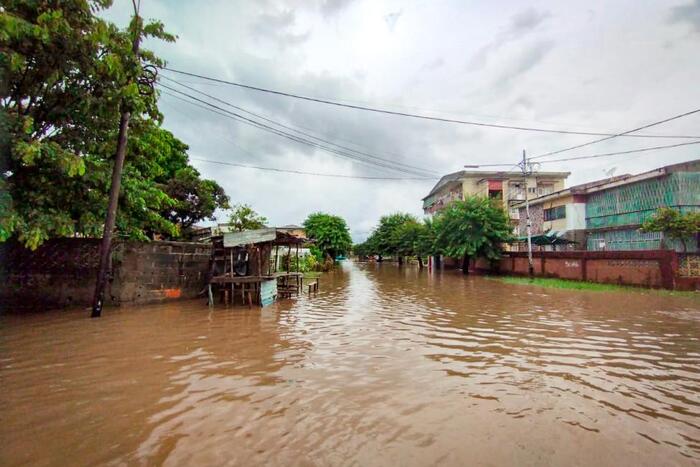Tropical Cyclone Freddy is expected to make landfall in Mozambique for the second time, after causing destruction in Madagascar. The storm first hit south-eastern Africa in late February and has broken records for its strength and the distance it has travelled across the Indian Ocean. Experts have noted that it is rare for a storm to make such a loop. It has become the longest-lasting storm on record and is expected to intensify as it approaches coastal Mozambique.
Cyclone Freddy has caused eight deaths and destroyed over 1,000 homes in Madagascar, and Mozambique is bracing for a second landfall while still recovering from the floods brought by Cyclone Idai in 2019. The country’s National Institute of Meteorology (INAM) has warned that the storm is expected to bring heavy rainfall, strong winds, and storm surges, which could lead to flooding and landslides in low-lying areas and locations with easily overwhelmed drainage systems.
According to the latest reports, Cyclone Freddy is currently a Category 3 storm, with wind speeds averaging 110 kilometres per hour (around 70 miles per hour) and gusts of up to 155 kilometres per hour (around 100 miles per hour). The storm is expected to intensify over the next few days as it moves closer to the coast, with some experts predicting that it could make landfall as a Category 4 or even a Category 5 storm.
Authorities in Mozambique have already started evacuating people from the most vulnerable areas, and emergency response teams have been put on standby to provide assistance to those affected by the storm. The government of Madagascar has declared a state of emergency in the affected areas and has requested international assistance to deal with the aftermath of the storm.
Cyclone Chalane: A devastating reminder
Cyclone Chalane struck the region in December 2020, killing over 30 people and causing widespread damage. The storm hit Mozambique just days after another tropical storm, Cyclone Eloise, had caused significant flooding in the same region. The back-to-back storms left hundreds of thousands of people homeless, and many were left without access to food, water, or medical care.
The impact of Cyclone Chalane was particularly devastating for the communities living along the coast, where many homes were destroyed, and fishing boats were washed away. The storm also caused significant damage to infrastructure, including roads, bridges, and power lines, making it difficult for emergency responders to reach affected communities.
The United Nations and other international organizations provided humanitarian assistance to those affected by Cyclone Chalane, including emergency supplies of food, water, and shelter materials. However, the impact of the storm was felt for months afterwards, with many communities struggling to rebuild their homes and livelihoods.
The impact of Cyclone Freddy on the region is a stark reminder of the urgent need for action to address the threat of climate change. As extreme weather events become more frequent and more severe, vulnerable communities are increasingly at risk of displacement, hunger, and disease. It is essential that we take action to reduce greenhouse gas emissions, adapt to the changing climate, and support those who are most vulnerable to its impacts. Through international cooperation and targeted investments in resilience-building, we can work together to build a more sustainable and equitable future for all.
Image Credit: IOM/Mozambique




